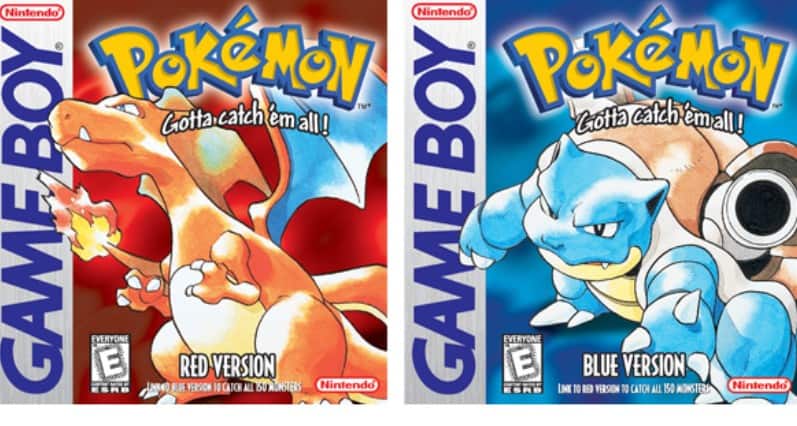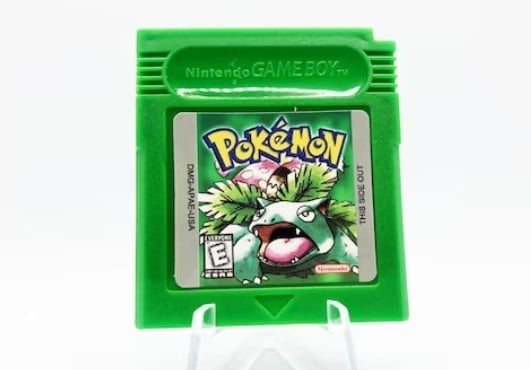Pokémon Red, Green & Blue were the lifeblood of hand-held gaming and started a dominant franchise. Little did we know that these games would begin the most successful franchise in entertainment history and whose merchandise would outsell any other known commodity. But the games don’t stop at just popularity; these games are filled with secrets, easter eggs, exploits, and incredible random facts.
So, if you’re a Pokémon fan, enjoy this ride into its legendary history. The game has notorious cheat codes, glitches, hidden rooms, and unreleased content. For many, Pokémon Red, Green, & Blue are set in stone and will forever stay the same. But as you’ll learn today, there are many different facets in making this legendary series.
Incredible Facts About Pokémon Red, Green & Blue
1. What is Pokémon Green?
For North American fans, they may be confused by the addition of Pokémon Green, that’s because the game was only released in Japan. In Japan, the games were released as Pokémon Red and Green. However, when they were brought to North America, they were released as Pokémon Red and Blue. This change was made to match the colors of the game cartridges and avoid confusion with the Game Boy’s red and green buttons. That means Pokémon Green has the same content as Pokémon Blue. Pokémon Green may be one of the most sought-after collector items. The rare version of the game was never seen by most of the Western world for a long time.
2. Secret Developer Easter Egg

The “Secret Developer Easter Egg” in Pokémon Red and Green refers to a hidden room in the Celadon Mansion. This room contains statues of the game’s developers, including Satoshi Tajiri, Ken Sugimori, Junichi Masuda, and others. To access this room, you’ll need to perform a specific glitch or use a cheat device, as it’s not accessible through normal gameplay.
- Get to Celadon City: First things first, make sure you’ve made it to Celadon City in your Pokémon adventure. You’ll need to have progressed through the game’s story to reach this point.
- Find the Celadon Mansion: Head over to the Celadon Mansion in the northeastern part of the city. It’s a tall building with multiple floors.
- Make Your Way to the Roof: You’ll need to reach the rooftop of the Celadon Mansion. Usually, you can do this by taking an elevator or stairs inside the building to get to the very top floor, which is the roof.
- Time for the Trick: Here’s where it gets a bit tricky. To enter the hidden room, you have two options
The Glitch Method
- This method involves using one of your Pokémon that knows the “Fly” move. You’ll initiate a battle with a specific trainer on the roof. During the battle, use “Fly” to escape from the fight, and right after that, quickly enter the Celadon Mansion. If you’ve pulled it off correctly, you’ll find yourself on the roof, and you can walk right through the wall into the Secret Developer Room.
The Cheat Device Shortcut
- If you’ve got a cheat device like a GameShark or Action Replay, things become easier. Input cheat codes that allow you to move through walls. Then, simply walk through the wall on the roof, and you’ll step into the hidden room.
Be warned, using cheat devices may corrupt your files, so attempt this at your own risk.
3. Capsule Monsters
That’s right, Pokémon was initially conceived as “Capsule Monsters,” and the concept went through various changes. Eventually, the creators landed on Pokémon, a contraction of “Pocket Monsters.” It should also be noted that conservative and Christian Westerners boycotted Pokémon at one point, declaring the Pocket Monsters were demonic. Eventually, the game and television show’s popularity drowned out the naysayers. While it’s mostly forgotten, it was a hilarious moment in history.
4. Never Released Pokémon
The game’s code contains data for several Pokémon that were never officially released. These include creatures like Rhydon’s pre-evolution, Gorochu, and a creature named “Kangaskhan’s baby” that may have been intended for Kangaskhan’s evolutionary line.
5. Lavender Town Syndrome
An urban legend known as the “Lavender Town Syndrome” claims that the original music in Lavender Town caused severe health issues and even suicides among Japanese children. This is not true and is purely a myth, but it became a famous rumor associated with the games.
6. MissingNo Glitch
The MissingNo glitch is one of the most famous and peculiar glitches in the Pokémon series, primarily associated with the original three games: Blue, Red, and Green. MissingNo stands for “Missing Number,” as it represents a Pokémon index number that should not exist in the game.
Here is a step-by-step guide on how to encounter the glitch.
How to Find MissingNo:
- Step 1: Go to Cinnabar Island in your game.
- Step 2: Surf along the island’s eastern coast, moving up and down as you go.
- Step 3: Keep an eye out for wild Pokémon encounters while surfing. MissingNo should eventually appear.
2. What Happens When You Find MissingNo:
- Bonus Items: When you encounter MissingNo, check your sixth item in the bag (your inventory). It will multiply, giving you more of that item.
- Experience Points: Catching MissingNo might also cause your Pokémon to gain a lot of experience points, leading to quick level-ups.
This is one of the best ways to gain unlimited Rare Candies to allow you to level up your favorite Pokémon fast or give you access to more Master and Ultra Balls.
7. Unfinished Safari Zone
While the Safari Zone was a beloved part of the original three games, it felt like it needed to be completed in parts. That’s because it was. Game Freak needed more time to thoroughly flush out that section of the game like they wanted to.
The Safari Zone is a unique location in Fuchsia City, known for its unique approach to catching Pokémon. Instead of battling wild Pokémon like in regular encounters, players used Safari Balls and bait to capture Pokémon. The Safari Balls had a set capture rate, and the success of catching a Pokémon depended on different factors.
Incomplete Features:
What makes the Safari Zone particularly intriguing in Pokémon Red, Blue, and Green is that it was initially designed to be much more extensive. Due to technical limitations and time constraints, many original ideas for the Safari Zone were never fully realized.
Some of the features that were planned but not implemented include:
- Additional Areas: The Safari Zone was meant to have more zones or areas for players to explore. In the final version, players only had access to a limited number of zones, each with its own set of Pokémon.
- Different Mechanics: There were plans for more varied and interactive mechanics in the Safari Zone, such as being able to place traps for Pokémon or having different types of bait to affect encounters. These features would have added depth to the Safari Zone experience. Instead, players were limited with the use of baits.
- Rare Pokémon: In the final version of the games, the developers ultimately excluded some exceptionally rare and valuable Pokémon.
While the game was nearly perfect for what it was, having a more finished product would have put the cherry on top. Giving access to different types of zones and baits would have made the zone more interesting. Instead, players had the same process and relied on luck more than skill. Catching Pokémon didn’t feel as rewarding in the Safari Zone when it comes down to chance.
